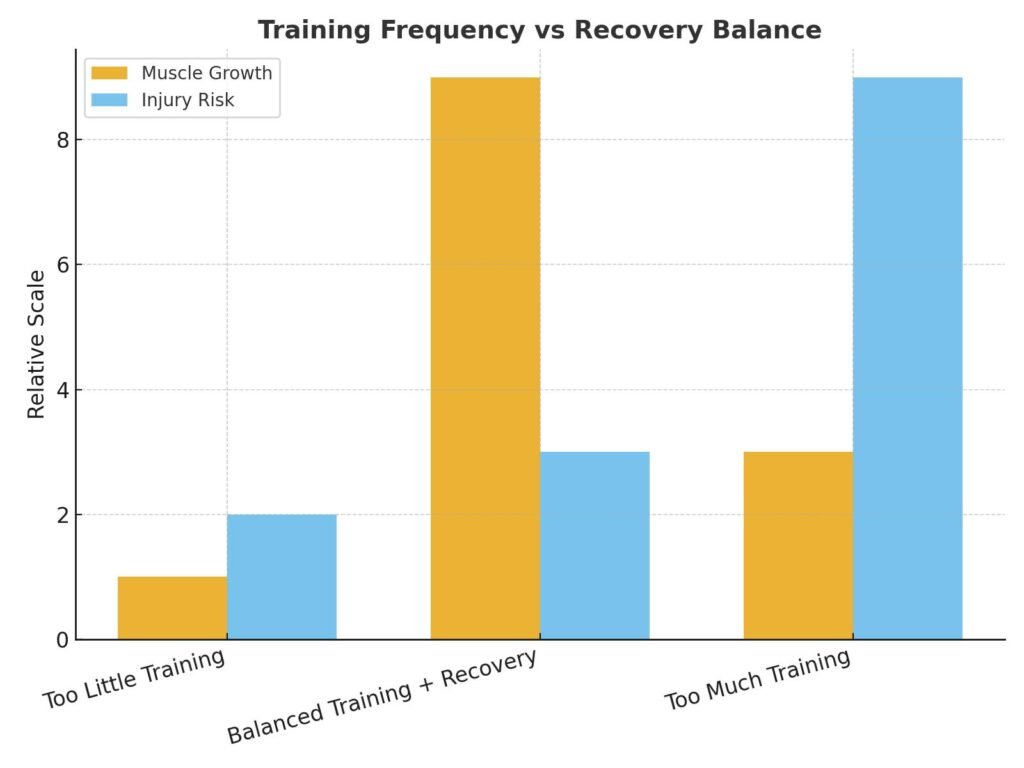Fitness Routines to Stay in Shape: Science-Backed Strategies for Strength, Longevity, and Energy
The Skinny Confidential Him & Her Podcast with Dr Shannon Ritchey | September 2, 2025
When most people think of fitness, they imagine endless cardio, restrictive diets, or lifting heavy weights until exhaustion. But the truth is, staying in shape doesn’t have to be complicated—or miserable. The real secret is building muscle strategically, eating enough protein, allowing recovery, and creating a structure you can actually stick to for life.
In this guide, we’ll break down the most effective fitness routines to stay in shape—rooted in science, supported by personal experience, and filled with practical tips you can apply today.

Why Muscle Matters More Than You Think
As we age, many people focus only on staying lean, but muscle is the true driver of health and longevity. Without enough resistance training, we risk more than just looking “softer” with age. Overdoing cardio or living a sedentary lifestyle leads to oxidative stress, insulin resistance, and faster aging.
Muscle isn’t just about appearance—it literally keeps you alive and moving. Strong muscles protect your joints, reduce back pain, support bone density, and allow you to remain independent as you age. Think about the difference between someone who can carry groceries upstairs with ease at 70, versus someone who struggles to get out of a chair. The difference almost always comes down to how much lean mass they’ve maintained.
Key takeaway: Muscle improves insulin sensitivity, acts as glucose storage, and helps regulate nearly every process in the body.
For example, one woman shared that after gaining 60 pounds during pregnancy, a specialist told her she had insulin resistance. Instead of just prescribing medication, she added weight training—and her insulin levels normalized.
Practical Tip: Even if fat loss is your goal, prioritize strength training. More muscle means your body will handle glucose better, reduce your risk of diabetes, and give you a tighter, “shrink-wrapped” look, regardless of the scale.
The Role of Protein in Staying Lean and Strong
You can’t out-train a poor diet, and you can’t build muscle without enough protein. Many people think they eat enough—until they track it. Most discover they’re eating half of what they actually need.
Protein isn’t just for bodybuilders. It’s essential for everyday people because it helps repair muscle tissue, keeps you full longer, and prevents overeating. If you’ve ever felt “snacky” all day, it’s probably because your meals were too low in protein. Unlike carbs that spike and crash your energy, protein provides steady fuel. It also supports glowing skin, strong hair, and hormone balance—things most people don’t connect to protein intake.
The general guideline is:
- 1 gram of protein per pound of body weight (or per pound of ideal body weight if overweight).
- For some, 0.75g per pound is sufficient, but shooting higher helps buffer days when intake is lower.
Example Day of 130–160g Protein:
- Breakfast: 4 eggs + Greek yogurt (40g)
- Lunch: Chicken breast with vegetables (50g)
- Snack: Protein smoothie or bar (20–25g)
- Dinner: Steak with side salad (50g)
- Dessert: Greek yogurt with protein powder & fruit (20g)
Practical Tip: Use convenient options like protein powder, protein bars, cottage cheese, or Greek yogurt to hit your daily goal. Don’t fear supplements—they’re tools to make life easier. For busy professionals or parents, grabbing a protein shake on the go is far better than skipping meals or reaching for processed snacks.
Protein Sources and Average Protein Content
| Food Item | Serving Size | Protein (grams) |
|---|---|---|
| Chicken breast | 6 oz | 50g |
| Greek yogurt | 1 cup | 20g |
| Eggs | 4 large | 28g |
| Cottage cheese | 1 cup | 25g |
| Protein bar | 1 bar (200 calories) | 20–21g |
| Protein shake (whey) | 1 scoop | 20–25g |
| Steak | 6 oz | 50g |
This chart shows why relying solely on whole foods can be challenging. Strategic supplementation makes hitting your protein target realistic. If you’ve ever felt overwhelmed by the number, remember that it gets easier once you build habits. For instance, starting your day with eggs and Greek yogurt can already put you at 40–50g before lunch.
Why Over training Backfires
Many people think more training equals more results. But muscle doesn’t grow in the gym—it grows during recovery.
When you train a muscle, it undergoes micro-damage and acute inflammation. This temporary weakness is necessary for growth, but if you train again too soon, you increase injury risk and blunt progress. Over time, this can spiral into chronic inflammation, fatigue, and joint pain—leaving you worse off than when you started.
This is why some people exercise daily yet never see progress. Their bodies are stuck in survival mode, unable to repair or grow stronger. In fact, too much high-intensity training raises cortisol, a stress hormone that makes it even harder to lose fat.
Key takeaway: More is not better—better is better.
Practical Tip: Train each muscle group 1–2 times per week on non-consecutive days. For example, work glutes Monday and Thursday, but don’t hit them every day. If you love being active, use your “off days” for walking, yoga, or mobility instead of heavy lifting.
Example Weekly Workout Split
Here’s a structured but flexible approach recommended in the document:
- Monday: Upper body (chest, back, shoulders)
- Tuesday: Lower body (glutes, quads)
- Wednesday: Core + accessory (triceps, mobility)
- Thursday: Lower body (glutes, hamstrings, biceps)
- Friday: Quads + abs
- Saturday & Sunday: Active recovery (walking, golf, tennis, or full rest)
This schedule balances intensity with recovery. Notice how glutes, quads, and abs are repeated, but only after sufficient rest. This allows growth without overstress. The weekends serve as intentional downtime, which research shows increases adherence—because you don’t burn out mentally or physically.
Practical Tip: Take two consecutive rest days per week. This maximizes recovery and consistency long term. Think of it as “muscle maintenance time,” where your body is actually working behind the scenes to build strength.

Chart Explanation:
- Training too little = no progress.
- Training moderately with recovery = maximum growth and strength.
- Training too much = chronic fatigue, higher cortisol, injuries, and stalled results.
If you’ve been stuck at a plateau, the problem isn’t always “not enough work”—sometimes it’s “not enough rest.” By dialing back intensity and sleeping more, you may notice your strength and definition improve faster than ever.
The Science of Stress, Sleep, and Insulin
Your fitness doesn’t exist in isolation—it’s tied to stress and nervous system regulation. Chronic stress increases cortisol, which elevates blood sugar and worsens insulin resistance.
When your body lives in “fight or flight” mode all day, even healthy routines like eating well and working out can feel less effective. That’s because recovery requires activating the parasympathetic nervous system, also known as “rest and digest.” Without it, inflammation stays high and your muscles never fully repair.
Key takeaway: Training your nervous system is just as important as training your muscles.
Practical Tip: After every workout, do 2–5 minutes of breathwork or meditation. This activates your parasympathetic system, helping your body recover faster. Over time, you’ll notice better sleep, lower anxiety, and improved workout performance—all from a few minutes of intentional breathing.
Debunking Common Myths
- “Lifting weights makes women bulky.”
False. Building muscle is a slow process. One woman shared it took her an entire year to gain just 5 pounds of muscle. That’s nowhere near the “bodybuilder bulk” many women fear. - “Cardio is enough to stay in shape.”
Wrong. Cardio improves heart health, but without resistance training you lose muscle, leading to metabolic slowdown and poor body composition. In fact, too much cardio can age your skin and make you look more “worn out.” - “More workouts = faster results.”
Over training leads to chronic pain, stalled progress, and even faster aging. Structured strength plus recovery beats random boot camps every time.
Practical Tip: Whenever you hear fitness advice that sounds too good to be true—like “this one move will slim your waist”—it probably is. Stick to the fundamentals: strength, protein, recovery, and consistency.
Real-Life Examples
A physical therapist overtrained in her 20s—lifting, teaching fitness classes, and doing yoga daily. By age 24, she felt like she had the body of an 85-year-old. Only after reducing volume and focusing on structured weightlifting did her pain disappear and results skyrocket.
Another person thought she needed cardio for fat loss. Instead, when she increased protein and lifted weights, her body composition changed dramatically—she weighed more but looked leaner and tighter.
Many women fear the scale going up when they build muscle. But those who stay consistent realize they look better in clothes, feel stronger, and have more energy—reminding us the scale isn’t the only measure of progress.
Five Pillars of Building Muscle and Staying in Shape
According to the document, these are the five essentials for long-term results:
- Programming: Structured weekly training with proper recovery. Avoid random “class-hopping” and build a plan that trains each muscle effectively.
- Exercise Selection: Choose lifts that feel good on your joints and target specific muscles. You don’t need heavy barbell squats if they hurt your back—try lunges, hip thrusts, or split squats instead.
- Nutrition: Prioritize protein, balanced calories, and whole foods. Think nutrient density over calorie obsession.
- Recovery: Sleep 7–9 hours, manage stress, and schedule rest. Your body grows stronger when you’re not training.
- Progressive Overload: Gradually increase weights or reps to keep progressing. Without challenge, your body has no reason to adapt.
Practical Tip: Focus on consistency, not perfection. Even small weekly improvements add up to massive long-term results. If you’re patient, the transformation will surprise you.
Final Thoughts: Fitness as a Lifestyle, Not a Phase
The fitness industry loves quick fixes and “shredded in 30 days” programs. But real results come from sustainable routines, balanced nutrition, and respect for recovery.
- Build muscle to age gracefully.
- Eat enough protein to fuel growth and satiety.
- Recover intentionally to prevent burnout.
- Focus on structure, not randomness.
When you commit to these principles, staying in shape stops being a struggle—it becomes a lifestyle that supports your energy, confidence, and health for decades to come.
Take Action Today:
Add 20–30 minutes of resistance training to your week.
- Track your protein for one day—you’ll likely be surprised.
- Schedule rest days as seriously as workouts.
- Try a short breathwork session after your next gym session.
Staying in shape isn’t about doing more. It’s about doing the right things—consistently.
Related Post



